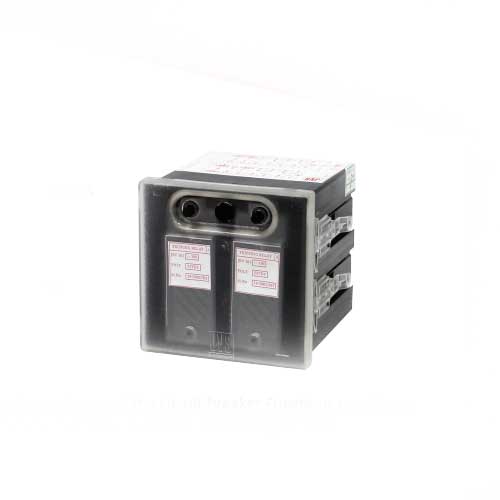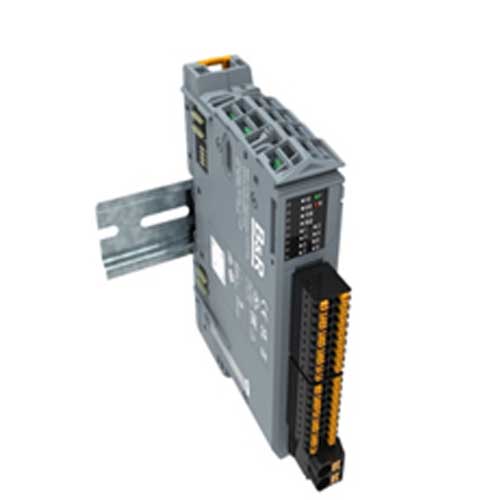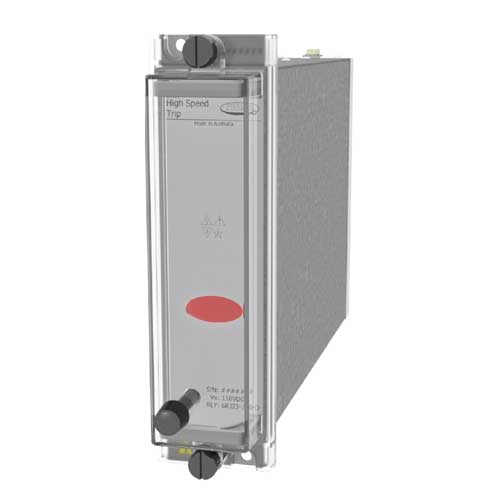Schedule a Call Back
MNCs in India: Creating a Strong Impact
 Technical Articles
Technical Articles- Jun 02,11

The arrival of the multinationals in the manufacturing sector in India has brought about revolutionary changes both in terms of fortunes and processes, reports Huned Contractor
At a recently-held press conference in Pune where the Dutch Group Royal DSM NV announced that it was restructuring its business organisation in India, Mr Rajeev Chopra, CEO and Managing Director, DSM India, said, "We have charted out a high-growth plan for India and will invest USD 25-30 million in the near future and more as the business grows. We want to treble our annual revenue from the current USD 200 million by 2015." This will not only involve ramping up its existing business but also herald the production of composite resins.
Earlier in the year, William Controls, an American company engaged in the production of electronic throttle controls for commercial vehicles, announced the opening of its first manufacturing facility in India at Pune on January 12. The plant, set up with an investment of USD 2 million, will produce electronic pedals for the company's growing base of customers in India's truck, bus, and off-road markets.
 In the course of an interview during which he elaborated upon the company's reasons for choosing India, Mr Patrick Cavanagh, President and CEO, William Controls, said, "The Indian market is one of the company's top markets for commercial vehicles worldwide and is expected to grow as the Indian government moves to implement more stringent vehicle emission standards." These are just two of the many instances in the past few years that have established the fact that India is now a major destination for multinational manufacturing companies for the simple reason that its growing economy not only provides a ready market for a wide range of goods but also for the fact that skilled manpower is easily available even as the infrastructure is being improved at a rapid pace. India is ranked second in the world in terms of manufacturing capability, according to the '2010 Global Manufacturing Competitiveness Index' by Deloitte
In the course of an interview during which he elaborated upon the company's reasons for choosing India, Mr Patrick Cavanagh, President and CEO, William Controls, said, "The Indian market is one of the company's top markets for commercial vehicles worldwide and is expected to grow as the Indian government moves to implement more stringent vehicle emission standards." These are just two of the many instances in the past few years that have established the fact that India is now a major destination for multinational manufacturing companies for the simple reason that its growing economy not only provides a ready market for a wide range of goods but also for the fact that skilled manpower is easily available even as the infrastructure is being improved at a rapid pace. India is ranked second in the world in terms of manufacturing capability, according to the '2010 Global Manufacturing Competitiveness Index' by Deloitte
 Touche Tohmatsu and the US Council on Competitiveness. In 2010, the indicator of the overall condition of the manufacturing sector moved up to 126.5 for the appraisal quarter, its highest reading since the April-June 2007 quarter.
Touche Tohmatsu and the US Council on Competitiveness. In 2010, the indicator of the overall condition of the manufacturing sector moved up to 126.5 for the appraisal quarter, its highest reading since the April-June 2007 quarter.
The report states that approximately 50 sectors in India's domestic manufacturing sector grew by 39 per cent during the April-December 2010 period, achieving the 'excellent growth' category. These segments are air-conditioners, natural gas, tractors, nitrogen fertilisers, ball bearings, electrical and cable wires, auto components, construction equipment, electric fans and the tyre industry. As many as 22 segments entered the 'high growth' group, registering a growth of 17.3 per cent during the first nine months of the existing fiscal. Industries such as utility vehicles, crude oil, power transformers, energy meters, alcoholic beverages and textile machinery have registered around 10-20 per cent growth.
 As more examples of the extent to which the MNCs are setting up shop in India, consider the fact that the iconic American superbike maker Harley Davidson is setting up an assemblage unit at Bawal, Haryana. This will be its second establishment outside the United States, after Brazil. Field Fresh, the 50:50 JV of Bharti Enterprises and Filipino firm Del Monte Pacific Ltd formed in 2007, has started its R&D and manufacturing unit at Hosur, Tamil Nadu, with an initial establishing cost of USD 26 million. Pipavav Shipyard has signed a memorandum of understanding (MoU) with SAAB Dynamics AB, part of Sweden's Wallenberg Group, for the manufacturing of products in the defence and aerospace sectors. Rieter Nittoku Automotive Sound Proof Products India, a joint venture between Rieter Group of Switzerland and Nihon Tokushu Toryo Ltd of Japan, has invested USD 15 million in a new unit at Oragadam, near Chennai.
As more examples of the extent to which the MNCs are setting up shop in India, consider the fact that the iconic American superbike maker Harley Davidson is setting up an assemblage unit at Bawal, Haryana. This will be its second establishment outside the United States, after Brazil. Field Fresh, the 50:50 JV of Bharti Enterprises and Filipino firm Del Monte Pacific Ltd formed in 2007, has started its R&D and manufacturing unit at Hosur, Tamil Nadu, with an initial establishing cost of USD 26 million. Pipavav Shipyard has signed a memorandum of understanding (MoU) with SAAB Dynamics AB, part of Sweden's Wallenberg Group, for the manufacturing of products in the defence and aerospace sectors. Rieter Nittoku Automotive Sound Proof Products India, a joint venture between Rieter Group of Switzerland and Nihon Tokushu Toryo Ltd of Japan, has invested USD 15 million in a new unit at Oragadam, near Chennai.
One of the factors that have provided a boost to the arrival of the MNCs is the government's proactive role. The new 'Consolidated Foreign Direct Investment Policy', which came into effect April 1, 2010 indicates that the government is also planning to set up national manufacturing and investment zones (NMIZs), the main objectives of which will be: a) to promote investments in the manufacturing sector and make the country a hub for both domestic and international markets, b) to increase the sectoral share of manufacturing in GDP to 25 per cent by 2022, c) to double the current employment level in the sector, and d) to enhance global competitiveness of the sector.
The biggest gain so far accrued from the MNCs has been in the automobile sector, which happens to be the ninth largest in the world. Following Japan, South Korea and Thailand, in 2009, India emerged as the fourth largest exporter of automobiles. In 2008, Hyundai Motors alone exported 2,40,000 cars made in India. Nissan Motors plans to export 2,50,000 vehicles manufactured in its India plant by the end of 2011. Some of the MNC players in this sector who have established a strong footprint include Audi, BMW, Chevrolet, DaimlerChrysler, Fiat, Ford, General Motors, Hyundai Motors, Volkswagen, and others. While inaugurating its second dealership in Pune, Volkswagen's Member of Board and Director, Mr Neeraj Garg, said, "In 2009-10 we sold 4,000 cars and in 2010-11 we sold 52,000 cars which makes it a jump of 13 times in just 12 months." Would any MNC require a better reason than that to make a beeline to India?
 Interestingly, from among all the countries that have shown interest in India, Germany has been playing a stellar role since many years. The fact that Germany is India's sixth-largest trade partner is enough of an indicator to prove that Indo-German business ventures have largely been successful. Most of these tie-ups are in the small and medium sectors and the joint ventures are mainly in the automobile industry, automation, engineering services, food technology, and pollution control. Along with the presence of such German industry leaders as Siemens, Daimler, Mercedes Benz, Bayer, BASF and Robert Bosch, among others, there are nearly 2,000 Indo-German collaboration agreements functional in India.
Interestingly, from among all the countries that have shown interest in India, Germany has been playing a stellar role since many years. The fact that Germany is India's sixth-largest trade partner is enough of an indicator to prove that Indo-German business ventures have largely been successful. Most of these tie-ups are in the small and medium sectors and the joint ventures are mainly in the automobile industry, automation, engineering services, food technology, and pollution control. Along with the presence of such German industry leaders as Siemens, Daimler, Mercedes Benz, Bayer, BASF and Robert Bosch, among others, there are nearly 2,000 Indo-German collaboration agreements functional in India.
The highest number of collaborations is for machinery and parts followed by heavy vehicles, chemicals and technical consultancy services. A Deutsche Bank report titled 'German FDI To India: Untapped Potential' states that
Indian subsidiaries of German companies regularly outperform their German parents. No wonder then that German companies in India have constantly ramped up their operations. MICO, the flagship company of the Bosch group in India, therefore announced major investments for the development of common rail diesel injection systems at its Nashik plant in Maharashtra while Siemens has been augmenting its manufacturing capacities and has set up a new transformer factory at Kalwa, near Mumbai. Of late, there has been noticed an increasing commitment of MNCs to India's wire and cable sector too.
The steel wire manufacturing industry in India accounts for an annual turnover of more than Rs 8,000 crore and the production of approximately 2.5 million tonnes of steel wires per annum. It employs around 10,000 workers and staff. The steel wire industry is a basic infrastructure industry producing various types of steel wires, which have high-end critical applications in infrastructure, auto industry, power distribution, defence, and other critical industries. The development of this industry is directly linked to the growth of the infrastructure, automobile, and power sectors. The industry caters to both the domestic and export markets.
Given this scenario, it comes as no small surprise to find the MNCs bringing these sectors into their focus domain too. An example is that of Switzerland-based Maillefer SA, with expertise in providing extrusion and winding solutions to the wire, cable and pipe industries, opening an office in India. Commenting on this initiative, Mr Manuel Felder, Executive Vice President (Sales & Marketing), said, "As being part of the BRIC countries, India is seen as a rapidly growing country with a strong potential for investments in infrastructure. With its manufacturing solutions for cables and pipe, Maillefer is in a good position to be one of the leading equipment suppliers to the leading players in this infrastructure development. The target is to be closer to our customers from the commercial and service point of view."
This can be further substantiated with the view of Mr Harry Prunk, CEO of Sikora AG of Germany, manufacturer of measuring, controlling, and testing equipment for the wire, cable, plastics, and rubber industry. "We are one of the leading suppliers of measuring and control technology in India and we are planning to further expand our business," he stated during a visit to India as a participant in a wire show held at Mumbai in November 2010. Such initiatives can be found in the cable space too. Consider, for example, a presentation made in December by Prysmian, a global player in the energy and telecommunications cables industry, and Ravin Cables Ltd, its Indian JV subsidiary. "The group's initial plan is to invest in a new high voltage cable manufacturing unit of up to 220 kV as well as to improve Ravin's product offer in the industrial cables market in sectors that include automotive, mining, and renewable energies," Mr Fabio Romeo, COO, Prysmian Group, said.
Reflecting on the reasons why the MNCs are finding India such a good bet, business analyst Mr S Vaidyanathan says, "The MNCs and the Indian industry are gaining a lot from each other. The MNCs are bringing in and adapting global best practices to help solve local problems and help India get interlinked better with the global economy.
As such, MNCs have become growth partners and have a major role to play in India's development.
They are investing with long-term horizon to help India realise its potential in new areas and helping diffuse technology and innovation in key sectors such as pharma, solar energy, agriculture, biotech, nuclear, defence, etc. Further, with the help of the MNCs we now have a proper understanding of the international markets and this has contributed to Indian companies going multinational, such as Tata, Bharti Group, and many others." As Mr Vaidyanathan points out, the entry of the MNCs has also helped push up India's exports. India's manufacturing sector, which currently contributes about 16-17 per cent of the country's GDP, was essentially structured only to cater to the domestic market. However, the recent export trade figures indicate a different trend. In the last three quarters of the country's fiscal year (April to March), India's exports have not only risen by over 30 per cent but manufacturing industries such as engineering, automotive, pharmaceutical, and chemical industries constituted over 25 per cent of India's total export revenues. Industry analysts believe that the overall export revenues would exceed USD 225 billion in the current fiscal year and this would rise to USD 450-500 million by 2015.
The demand for engineering goods, such as heavy engineering and transport equipment, capital goods, and other machinery/equipment including castings, forgings and fasteners from India is growing. Revenues from engineering goods will triple from its current USD 40 billion to around USD 120 billion by March 2015.
Another industry which is expected to perform well in the export market is India's pharmaceutical industry, the exports of which exceeded USD 10 billion in 2010. Global pharmaceutical companies, realising the market potential and strengths of India's pharmaceutical companies, are on an acquisition spree. Some of the notable recent acquisitions are Ranbaxy by Daiichi Sankyo, Piramal Healthcare by Abbot Laboratories, Matrix Laboratories by Mylan, Paras Pharma by Reckitt Benckiser and Shantha Biotech by Sanofi Aventis. Surely then, the graph of progress as far as the MNCs in India are concerned is all set to spiral upwards.
Carl Zeiss ACCURA II
Tailored to the Customers' Requirements
German measuring technology major Carl Zeiss, recognising the importance of the emerging Indian market and the need to get in close contact with its customers, started direct operations in India in January 1998. Today, Carl Zeiss India (Bangalore) Pvt Ltd has emerged as a major player in measuring technology in the country.
 To meet the changing needs of technology and the need for highly precise measurements at low cost, the German company has launched an innovative new generation bridge-type measuring machine.
To meet the changing needs of technology and the need for highly precise measurements at low cost, the German company has launched an innovative new generation bridge-type measuring machine.
The company has introduced ACCURA II, tailored to the customers' requirements.
The new generation ACCURA II comes with precision, speed, reliability and multi sensor capability.
The platform concept of the new ACCURA allows users to tailor the measuring machine to their requirements and budget. Furthermore, the modular design provides them with security in their investment: the new ACCURA can be modified to meet changing requirements on the configuration, sensors and software.
Special attention is given to productivity. The more rigid air bearings increase the speed and thus workpiece throughput. The new, maintenance-friendly design also improves machine availability.
Equipped with the new performance package, the new ACCURA reaches speed up to 800 mm/s. The smallest version of the machine features a measuring range of Z = 800 mm. The largest offers a measuring range up to 2000 x 4200 x 1500 mm.
The ACCURA II can be operated up to a temperature of 26?C. This enables the user to freely select the measuring lab temperature and save air conditioning costs.
(Contact: Carl Zeiss India (Bangalore) Pvt Ltd, #22, Kensington Road, Ulsoor, Bangalore 560 008. Tel: 080-43438115, 43438102. Email: imtindia@zeiss.co.in)
Economic Aspects in Surface Finishing
Grinding - a mere annoyance or an indispensable component?
 In recent years stainless steel has found increasingly widespread use for innumerable applications. This is surely for the one part due to the extraordinarily positive characteristics of the material. For the other part, however, it is also due to the outstanding surface finish of the products made with this material which are subject to highest demand on visual appearance.
In recent years stainless steel has found increasingly widespread use for innumerable applications. This is surely for the one part due to the extraordinarily positive characteristics of the material. For the other part, however, it is also due to the outstanding surface finish of the products made with this material which are subject to highest demand on visual appearance.
Semi-finished stainless steel products normally have a high-grade finish. In the finishing process this surface is clearly subjected to a lot of wear and tear, e.g., by sawing or welding, so that subsequent machining is required to give the product the desired finish. And almost every product is different, requires a different tool and a different working technique.
A correct assessment of surface finishing offers a lot of ideas on whether in this process money will be consumed or earned. Apart from the expensive materials, the work pieces usually enshroud the embodiment of the idea. And by the time the parts are given their final finish, they have already incurred high costs. It therefore makes a difference whether the finish is perfect or not, and whether times is saved by following the correct procedures - for example by the use of a brush grinding head which produces outstanding finish very quickly at the same time eliminating an entire work operation.
offers a lot of ideas on whether in this process money will be consumed or earned. Apart from the expensive materials, the work pieces usually enshroud the embodiment of the idea. And by the time the parts are given their final finish, they have already incurred high costs. It therefore makes a difference whether the finish is perfect or not, and whether times is saved by following the correct procedures - for example by the use of a brush grinding head which produces outstanding finish very quickly at the same time eliminating an entire work operation.
Even small saving can add up to appreciable amounts in the end.
The Problem
Railing and banister manufacturing - How does one get into extremely small angles with the very small radii? Such fillet welds shown below can scarcely be reached with conventional angle or straight grinders.
The Solution
Belt grinders and belt grinder and attachments specially designed for this purpose make it possible to reach into the tightest corners, even into those with very small radii.
(Contact: Suhner India Pvt Ltd, Bangalore. Tel: 080-27831108. Fax: 91-80-27831109. Email: abrasive.in @ suhner.com)
Siemens Launches New Wind Turbine for Indian Market
Siemens Energy Sector recently launched a new wind turbine for the Indian market at the Wind Power India International Conference and Exhibition 2011 held in Chennai. The new product, SWT-2.3-113 (Direct Drive) with leading technological edge, was launched and will target low wind markets with a clear focus on generation based customers. With this launch, Siemens intends to utilise its engineering expertise in energy efficiency to strengthen its local presence by manufacturing and supplying range of wind turbines. Siemens will manufacture these products at Vadodara, Gujarat. The production at Vadodara is slated to commence in 2013 with an annual capacity of 250 MW which will be scaled upto 500 MW by 2015 to meet market demand. The Company is additionally investing in a research and development (R&D) technology center at Vadodara.
The newly-launched Wind Turbine is especially suitable for low wind regimes in India. Due to the large rotor and low rating it allows the turbine to exploit predominantly low wind conditions. A full power Net Converter? is also offered ensuring better power quality and grid stability. Siemens Direct Drive technology provides a simple design with 50% fewer parts and 70% less moving parts reducing mechanical complexity and the need for maintenance. The revolutionary direct drive generator and the new optimized Quantum Blade are paired to extract maximum results even from moderate winds. The wind turbine is highly appropriate for Indian conditions and is designed to deliver unparalleled performance and reliability.
With India's current cumulative installed capacity at 13 GW (as on December 2010), reaching 64 GW by 2020 (as per GWEC estimates), Siemens SWT 2.3-113 (Direct Drive) wind turbines' innovative, simple and robust direct drive concept, is designed for maximum performance. Wind power is part of Siemens' Environmental Portfolio. With over 9,600 wind turbines and a total capacity of more than 13 000 Megawatt (MW) installed worldwide, Siemens offers highly efficient wind turbines with low life-cycle costs to project developers and independent power producers.
In fiscal 2010, revenue from the Portfolio totaled about INR1,79,520 crores making Siemens the world's largest supplier of eco-friendly technologies. In the same period, our products and solutions enabled customers to reduce their carbon dioxide (CO2) emissions by 270 million tons, an amount equal to the total annual CO2 emissions of the megacities Hong Kong, London, New York, Tokyo, Delhi and Singapore.
Related Products

High Speed Tripping Relay Two Element Relay - Jrv 181x2
JVS Electronics Pvt Ltd offers a wide range of high speed Read more

Plenty of Motion Possibilities in a Compact Housing
B&R Industrial Automation offers a wide range of plen Read more

High Speeed Tripping Relay Three Element Relay
JVS Electronics Pvt Ltd offers a wide range of high speed tripping relay three element relay - JRV 181x3.












